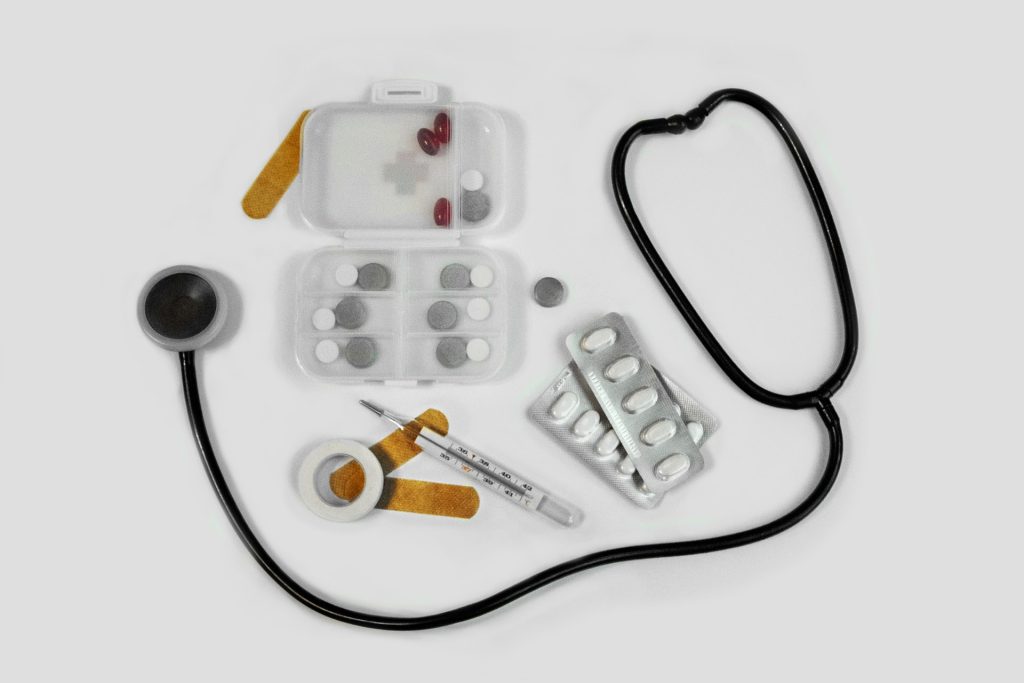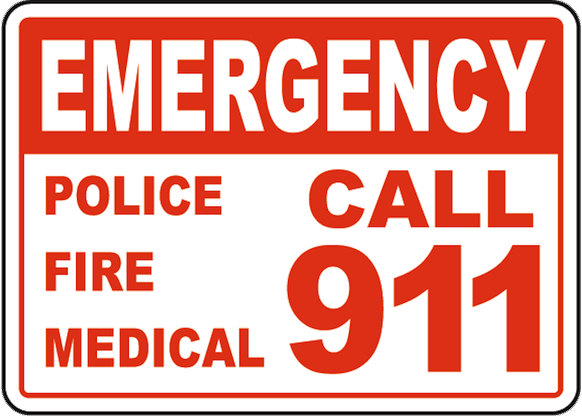There is a clear and simple difference between depression and sadness:
Sadness, a common emotion felt by us all, is just one of the many symptoms of real depression.
Depression – known medically as major depressive disorder (MDD), or clinical depression – is far, far more than just common sadness.
What is Depression?
Depression is a long-term mental health disorder that seriously impacts a person’s daily life – from doing simple, everyday tasks to those whose normal social and occupational or academic functioning is seriously affected, which is known medically as major depression with severe impairment.
For the sufferer, depression can mean constant, debilitating sadness and feelings of emptiness, severe fatigue, unwarranted feelings of low self-esteem, guilt and worthlessness, and thoughts of suicide, which is known as “suicidal ideation.”
Sometimes, even with professional treatment, these thoughts can result in a suicide attempt, and tragically, some of these prove to be successful.
What is Sadness?
Sadness is one of many common human emotions that we all feel at some point in our lives – a perfectly natural response to an event or situation that causes emotional upset or pain.
Although there are varying degrees of sadness, it is just like every other human emotion in that it is temporary, and soon passes, given time.
Keep reading to not only learn more about the effects of depression, but to also learn the signs and symptoms of depression, how it is diagnosed, and how a medical condition so powerful and debilitating can be successfully managed, treated, and eventually resolved.
Contents:
- The Prevalence of Depression in the U.S.
- The Signs & Symptoms of Depression
- Depression: The Risk Factors
- The Treatment & Management of Depression
The Prevalence of Depression in the U.S.
According to the National Institute of Mental Health (NIMH), depression – or major depressive order / MDD – is the second most common mental illness, after anxiety disorders, in the U.S., affecting 8.4% (or around 21 million people) of the population:
- In 2020, the prevalence of at least one major depressive episode (MDE) was higher among adult females (10.5%) compared to males (6.2%).
- Additionally, the age group where MDE prevalence was highest was among individuals aged 18-25 (17.0%), and highest among those who report having multiple (two or more) races (15.9%).
As we described earlier, for some individuals, major depression can result in severe impairments that interfere with their ability to carry out major life activities:
- In 2020, 6% of U.S. adults (an estimated 14.8 million people) had at least one major depressive episode with severe impairment during the past year.
Depression Among U.S. Adolescents
The prevalence of depression among U.S. adolescents (aged 12-17 years) is twice the rate of the adult population at 17%, or an estimated 4.1 million adolescents. Additionally:
- Mirroring the statistics of the adult population, the prevalence of MDE was higher among adolescent females (25.2%) compared to males (9.2%), and was highest among those reporting two or more races (29.9%).
- Those with an MDE with severe impairment amounted to an estimated 2.9 million adolescents (12.0%) of the U.S. adolescent population.
Professional Treatment for Depression in the U.S.
In 2020, an estimated 66.0% of U.S. adults with MDE received treatment in the past year.
Out of those whose MDE was with severe impairment, an estimated 71.0% received treatment.
In the same year, an estimated 41.6% of U.S. adolescents with MDE received treatment in the past year, and out of those whose MDE was with severe impairment, an estimated 46.9% received treatment.
Depression Rates Have Risen During the Coronavirus Pandemic
At the beginning of the coronavirus pandemic, medical experts and pediatricians were highly concerned about the mental health of children and teenagers. Their concern was soon justified.
In 2021, the American Academy of Pediatrics (AAP) declared a national state of emergency regarding child and adolescent mental health. According to the AAP:
“More than 140,000 children in the United States lost a primary and/or secondary caregiver, with youth of color disproportionately impacted.”
“We are caring for young people with soaring rates of depression, anxiety, trauma, loneliness, and suicidality that will have lasting impacts on them, their families, and their communities.”
Furthermore, according to one of the most recent studies on pandemic adolescent suicide (published April, 2022) and conducted by the Massachusetts Institute of Technology, it was reported that suicides by adolescents aged 10-19 years of age significantly increased during the pandemic.
U.S. Mental Health Compared to Other High-Income Countries
Mental health is an important indicator of a society’s overall well-being, and according to the highly respected Commonwealth Fund, the U.S. has one of the worst rates of mental illness compared to other high-income countries.
In today’s U.S., mental illness is all too common, with nearly 1 in 5 American adults having a diagnosable mental health condition in any given year.
In addition, the U.S. has some of the worst mental health-related outcomes, including the highest suicide rate and second-highest drug-related death rate.
Furthermore, while U.S. adults are among the most willing to seek professional help for emotional distress (an issue associated more commonly with low-income countries), they are among the most likely to report access or affordability issues.
The Signs & Symptoms of Depression

Although sadness can feel overwhelming at times, there are moments when you laugh or feel comforted. Here are the symptoms of depression ( areal mental illness, not an emotion), which highlight the vast difference between the two:
Depression: The Symptoms |
||
|
|
|
It is possible to have some of these symptoms if you are sad; accordingly, they shouldn’t last more than two weeks. Suicidal thoughts are, however, a more serious symptom and a clear sign of depression, not sadness.
Depression: The Medical Diagnosis Explained
Mental health professionals in the U.S. use the American Psychiatric Association’s “Diagnostic and Statistical Manual of Mental Disorders” (known as the DSM-5 criteria) to assist in determining if someone is sad or depressed.
A clinical diagnosis of depression (either major depressive disorder or persistent depressive disorder) is made if the DSM-5 criteria are met.
This criterion includes 9 potential symptoms of depression. Additionally, the severity of each symptom present also forms part of the diagnostic process; these are the 9 symptoms:
Clinical Depression: The 9 Symptoms Used for Diagnosis (as per DSM-5) |
|||
|
|
||
Lastly, you may have to undergo a physical exam to determine if an underlying health problem is causing or affecting your condition. This may include a blood test to determine if you have an underactive thyroid (hypothyroidism).
“I Had a Black Dog, His Name was Depression”
Published by the World Health Organization (WHO)
In collaboration with WHO to mark World Mental Health Day, writer and illustrator Matthew Johnstone tells the story of overcoming the “black dog of depression.”
Depression: The Risk Factors
Depression can be found in every U.S. demographic, occurring in men and women of any age, and across all ethnic groups and socio-economic backgrounds.
As with any demographic, though, there are definable factors that can increase the risk for depression. However, identifying one or more risk factors in yourself doesn’t mean you are destined to become depressed.
Depression: The Risk Factors |
|
|
|
The Link Between Depression & Specific Medications
As we know, prescription medications can invoke side effects in some patients, and depression is actually a side effect of certain medications. If you’re concerned that a medicine you’re taking is affecting your mood, you should discuss it with your doctor without delay.
Medications that may cause depression include
- Beta-blockers: For reducing blood pressure
- Corticosteroids: For the treatment of rashes, inflammatory bowel disease, and asthma
- Hormonal medications: For use as a form of long-term birth control/contraception
- Statins: For the treatment of high cholesterol
Depression: The Importance of Seeking Professional Help

The importance of seeking professional help for suspected depression cannot be stressed enough. If you experience constant sadness for more than 2 weeks, you need to talk to your doctor.
If your feelings are interfering with your ability to function, take part in life, or experience enjoyment, it is important to speak to a medical professional, a professionally qualified therapist or counselor, or other trusted person.
|
If you are having suicidal thoughts, |
 |
||
The Treatment & Management of Depression
If you are diagnosed with depression by a medically qualified professional, such as your family physician or a mental health specialist, the most important fact for you to remember is this:
Depression is a highly treatable condition, with the overwhelming majority of those who seek treatment showing definite improvement.
Because of the nature of depression and the associated risk of potential suicide, it must be treated by a physician or qualified mental health professional.
The actual program of treatment depends on a number of factors, and the medical professional in charge of your program will tailor it to meet your current mental health needs. These factors include the pattern, severity, and persistence of depressive symptoms and the history of the illness.
As with virtually every medical condition, early treatment is usually far more effective and helps prevent the likelihood of serious recurrences later.
The most commonly used treatments for depression are antidepressant medication, psychotherapy or a combination of both.
However, some people are vehemently opposed to taking powerful prescription medicines for a variety of reasons, such as the fear of an adverse event happening because of the medicine, the high cost of medication, and being prescribed multiple medications.
Depression: Psychotherapy & Specialist Therapies
Those suffering from mental health conditions and substance use disorders (SUDs) usually undergo a series of psychotherapy sessions, known as “talk therapy.”
The type of psychotherapy and its duration normally depends upon the severity of the depression, their personal situation, and their insurance coverage. Talk therapy often forms an integral part of an overall treatment plan that can include medication or other therapies and treatment options.
According to the National Institute of Mental Health (NIMH), here are the most widely used specialist psychotherapies for addressing and treating depression:
- Cognitive-Behavioral Therapy (CBT): A dual aspect therapy, CBT involves the cognitive element which helps to develop helpful beliefs about the client’s life, and the behavioral element, which helps the client learn to choose better options and take healthier actions. CBT works well for depression, as well as anxiety and bipolar disorder, but it can also be used for other behavioral health conditions.
- Interpersonal Therapy: Interpersonal therapy focuses on improving relationships, and helping clients to express emotions in healthy ways. it, too, often works well for depression.
- Family Therapy: Designed to help family members communicate effectively, handle conflicts and resolve problems better than before.
- Psychodynamic Therapy: Therapy that helps people develop a better understanding of their unconscious emotions and motivations that can affect their thoughts and actions.
- Psychoeducation: A helpful, educational addition to mental health treatment, where clients learn about mental health conditions and, importantly, ways to promote recovery.
Depression: Prescription Medications
Medical experts and researchers propose that mental health conditions like depression are the result of chemical imbalances in the brain. Depression medication works on these imbalances to reduce symptoms.
It is highly likely that specific types of medication, such as antidepressants and mood stabilizers, are prescribed to alleviate depression’s symptoms, as part of an overall treatment plan.
All medicines have clear benefits and potential side effects. Always talk to your doctor about any concerns that you may have.
It is important to remember that medications are not “absolute cures.” Medications only treat symptoms, so if the course of meds is stopped, symptoms will likely return.
- Antidepressants: These prescription medicines help to reduce feelings such as sadness or depressed mood and anxiety, as well as suicidal thoughts. However, they do not make people “happy” or alter their personalities.
The oldest form of antidepressants are called tricyclic antidepressants, but they have now been virtually replaced by newer and better drugs, such as SSRIs (selective serotonin reuptake inhibitors) and SNRIs (serotonin–noradrenaline reuptake inhibitors).
Examples of SSRI medications, with brand names in brackets, include citalopram (Celexa), escitalopram (Lexapro), fluoxetine (Prozac), paroxetine (Paxil, Pexeva), and sertraline (Zoloft).
Examples of SNRI medications, with brand names in brackets, include desvenlafaxine (Pristiq), duloxetine (Cymbalta), levomilnacipran (Fetzima), and venlafaxine (Effexor XR).
Potential side effects of antidepressants include drowsiness or insomnia, constipation, weight gain, sexual problems, tremors, and a dry mouth.
- Mood Stabilizers: Mood stabilizers help to reduce or eliminate extremes of high (known as mania) and low moods (depression), and related symptoms. They are also used to treat long-term depression where an antidepressant alone is not enough.
Examples of SSRI medications, with brand names in brackets, include carbamazepine (Carbatrol, Epitol, Equetro, Tegretol), divalproex sodium (Depakote), lamotrigine (Lamictal), lithium, and valproic acid (Depakene).
Lastly, potential side effects include stomach issues, drowsiness, weight gain, dizziness, shaking, blurred vision, a lack of coordination, and confusion.
Depression: Making Lifestyle Changes
Lifestyle changes are simple yet powerful and effective tools in the treatment of depression. Making the right lifestyle changes can help lift depression quicker and help to prevent it from returning.
Here are the most common lifestyle changes that have been proven to help resolve depression:
- Exercise: Regular exercise is a highly effective method for improving mental health and certain disorders, such as depression. Not only does it boost serotonin, endorphins, and other healthy brain chemicals, it triggers the growth of new brain cells and connections, as antidepressants also do.
- Social Support: Strong social networks, such as family, friends, and connections made at mutual aid meetings, reduce feelings of isolation immensely, a key risk factor for depression.
- Nutrition: Eating healthily is extremely important for physical and mental health. In the case of depression, eating small, well-balanced meals throughout the day will help you to maintain good energy levels and minimize mood swings.
- Sleep: The quality and duration of sleep has a significant effect on mood. When you don’t get enough sleep, your depression symptoms will worsen. Try to ensure between 7-9 hours each night.
- Stress Management: Making lifestyle changes also helps to manage and reduce stress. Excess stress will exacerbate depression and places you at risk for future depressive episodes. Learn stress management techniques, such as meditation or yoga, to reduce your stress level.
Whichever options form your treatment program, you need to remember that recovery from depression takes time and commitment. Sometimes, it will feel overwhelming or frustratingly slow. This is perfectly normal. As you may know, any recovery from a chronic medical condition will have its ups and downs.
Modern Recovery Services: Online Intensive Treatment for Depression
More and more people are choosing the professional and now firmly established “telehealth” option of online treatment and therapy for their depression.
Modern Recovery Services, located in Tempe, Arizona, is the only behavioral health accountability and support program that can offer technology-driven results to our clients, their families, and even treatment professionals.
Modern Recovery Services offers online intensive outpatient program (IOP) options for mental health treatment, recovery coaching, adolescent therapies and programs, and other mental health services.
All of our mental health care services comprise:
- Personalized individual treatment plans
- Online therapy, counseling, and mental health services
- Individual, group, and family sessions
- Coaching with an assigned recovery coach, if applicable
Modern Recovery is your source for comprehensive support for mental health recovery. Our mission is to provide consistent structure and accountability to empower participants in achieving success.
Contact us today to learn about all the depression treatment options available to you.